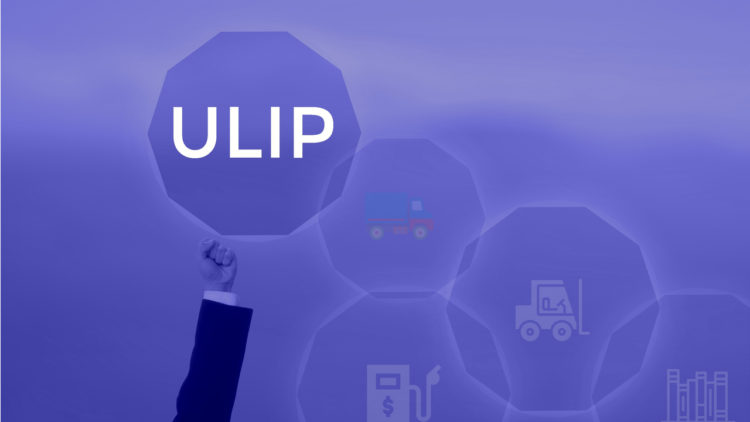Religare Health Insurance Company is a standalone health insurance company which was established in July 2012. Religare Health is a part of the Religare Enterprises Limited which enjoys a good market reputation. Ever since the company was formed, Religare Health has been offering innovative and cutting edge health insurance products which are not only comprehensive in terms of their coverage, they also have affordable premiums. The company has also won various awards which include the Best Health Insurance Company presented by the ABP News-BFSI Awards and also the Best Medical Insurance Product Award presented at The FICCI Healthcare Awards among others. In the financial year 2020-21, Religare was renamed to Care Health Insurance Company.
When it comes to health insurance claims, Religare has an in-house claim settlement department which eliminates any third party administrators and ensures speedy claim settlements. The company boasts of a high claim settlement ratio which stands at 92%. The Incurred Claims Ratio for the financial year 2017-18 is also good at 51.97% .
Health insurance claims can be of two types which are as follows –
- Cashless claims
- Reimbursement claims
Let’s understand what these claims are and the process of filing each.
What is a cashless claim?
A cashless health insurance claim is where Religare settles your medical bills directly with the hospital. You don’t have to face the burden of the bills yourself. Cashless claims are available if you seek treatment at any of the networked hospitals in India. Currently, Religare has a tie-up with more than 5420 hospitals across India that allows cashless claim settlements.
What is a reimbursement claim?
A reimbursement claim, on the other hand, is when you are not admitted at a networked hospital. In that case, you are required to pay your medical bills yourself. Thereafter, once you are discharged, you can submit your medical bills and get them reimbursed from Religare.
Claim settlement process for Religare health insurance plans
Now that you know the different types of health insurance claims, let’s understand the process through which you can file each claim.
Process for Religare cashless claims
The cashless claim settlement process is divided into three parts which are described below –
- Informing the company of the claim
This is the first step in raising a Religare cashless claim. You have to inform Religare about your claim. Information can be given through a toll-free helpline number which is 1800 102 4488 or by sending an email at customerfirst@religarehealthinsurance.com. If you are hospitalised due to an emergency, the company should be intimated within 24 hours of hospitalisation. However, in the case of planned hospitalisation, intimation should be given at least 48 hours before you are hospitalised. - Starting the process for pre-authorization of your claim
Once the Religare cashless claim has been intimated, you have to complete the pre-authorization process so that your claim is settled on a cashless basis. For pre-authorization, the following steps should be followed –- Avail a pre-authorization form from the hospital’s insurance desk. The form is also available online on the company’s website at https://www.religarehealthinsurance.com/health-insurance-claim-forms.html?categoryId=1
- The first part of the Religare claim form contains your personal details which you should fill up. Sign the Religare health insurance claim form and submit it to the hospital’s insurance desk. The remaining form would, then, be filled up by the insurance desk of the hospital
- Once the Religare claim form is completely filled, the hospital’s insurance desk would fax the same form to Religare at 1800 200 6677
- Processing of pre-authorization request
After the pre-authorization process has been initiated by the submission of the pre-authorization form, Religare would process the form and approve cashless claim settlements. The steps involved in this processing are as follows –- The company’s medical team would assess the pre-authorization form and the documents which the hospital submitted
- If the pre-authorization request is approved, you and the hospital would be informed by Religare
- If there is any lack of information or if any important document is missing, Religare would inform you as well as the hospital so that the missing information or document can be furnished
- If the pre-authorization request is not accepted by Religare, you would be informed. You would then have to bear your medical expenses yourself and later get them reimbursed from the company after you are discharged from the hospital
Process for Religare reimbursement claims
If you are admitted in a non-networked hospital or if your cashless pre-authorization is not accepted, you have to file for a reimbursement claim. The Religare reimbursement claim process is again divided into three heads which are as follows –/span>
- Informing the company of the claim
After you are hospitalised, you are required to inform Religare of the same. This information should be given within 24 hours of hospitalisation if you are hospitalised in an emergency. For planned hospitalisation, however, the information should be given at least 48 hours in advance.
When informing Religare, the following details would also have to be furnished –- Name of the policyholder
- Customer ID
- Name of the claimant
- Details of the hospital where you are availing treatments
- Details of diagnosis and treatments
- The approximate amount of claim
- Date of admission into the hospital
When the company is informed it would give you a claim reference ID for future correspondence. You can check your Religare claim status using the reference ID.
- Commencement of the claim process
You should avail the Religare claim form which is available online with Religare at https://www.religarehealthinsurance.com/health-insurance-claim-forms.html. Fill up the form, sign it and send it to the company along with the relevant documents pertaining to the claim. The address at which the claim form and the documents should be sent is as follows –
Religare Health Insurance Company Limited,
Unit No. 604 – 607, 6th Floor, Tower C, Unitech Cyber Park,
Sector-39, Gurugram-122001 (Haryana) - Processing of the claim and reimbursement of expenses
Once the claim documents are received by Religare, its in-house claim settlement team would look into the claim documents. If the reimbursement claim is approved, you would be informed by the company. If any information or document is missing, the same would be communicated to you and you should provide the missing detail.If the claim is rejected the company would inform you of such rejection and also the reason. You can also check your Religare claim status online on the company’s website.
Remember that reimbursement of the expenses is done directly to your bank account. You should, therefore, submit a copy of your bank account’s cancelled cheque for getting the reimbursement directly credited to your account.
Documents required for claim settlement
Whether you are making a cashless claim or a reimbursement one, you would have to submit some documents to the insurance company for settlement of your claims.
These documents include the following –
- Original Religare health insurance claim form which should be filled in and signed
- A valid photo identification proof
- Discharge Summary received after being discharged from the hospital
- Referral letter issued by a medical practitioner which recommends hospitalisation
- Prescription issued by a medical practitioner which lists the medicines, diagnostic tests or consultation given
- All the medical bills and receipts in original received from the hospital or medical practitioner
- All the original bills received from the pharmacy
- All the original reports of the diagnostic or investigative tests done, radiology reports and the receipts of payments made for the same
- Indoor case papers which is made by the hospital on a daily basis and contains the notes of doctors and nurses as well as the patient’s progress and condition
- Police FIR in case of accidental hospitalisation or for any other case, if applicable
- Post mortem report if post mortem has been done
- Any other additional document which Religare requires to assess and verify the claim
Reasons for rejection of health insurance claims
Though Religare offers speedy claim settlements, there are situations when your health insurance claim can be rejected. These situations include the following –
- If the policy has expired
- If the sum insured has been exhausted
- If the claim is made for a medical expense which is excluded under the plan
- If a fraudulent claim is made
- If the claim related documents are not submitted
So, if your health insurance claim is rejected, understand why the rejection occurred.
Religare’s in-house claim settlement department makes all the difference in the claim settlement process. Your claims are handled directly by the company and are settled effectively and efficiently. You just have to follow the steps and submit the Religare health insurance claim form for your claim to be processed. So, the next time you face a health insurance claim in your Religare health insurance policy, know the steps to file the claim and also submit the important documents so that the claim is settled smoothly.
Alternatively, you can also contact Turtlemint for your Religare health insurance claims. Turtlemint would help you get your claims settled quickly. You wouldn’t have to remember the detailed steps of the claim process. All you would have to do is intimate Turtlemint of your claim. Intimation can be given by calling up the toll-free number 1800 266 0101 or by sending an email to claims@turtlemint.com. Thereafter, Turtlemint would coordinate with Religare. It would do the protocols right from filling and submitting Religare health insurance claim form to tracking your Religare claim status and get your claims settled at the earliest. You can also track your Religare health insurance claim status online and keep informed about the settlement of your claim. Simple, isn’t it?
Frequently Asked Questions
- How to renew Religare health insurance?
To renew your Religare health insurance plan, you can visit the official website of the company and click on ‘Renew’. The link is https://www.careinsurance.com/rhicl/proposalcp/renew/index-care. Provide your policy number, date of birth and contact number to check the details of your existing policy and renew it online. The renewal premium would be displayed and you can make changes in the policy if you need. Pay the renewal premium online and you would be able to renew your policy instantly. Alternatively, if you have bought your policy through Turtlemint, you can log into your online Turtlemint account and renew the policy from Turtlemint’s platform also.
- What is Smart Select in Religare health insurance?
Smart Select is a list of networked hospitals of Religare health insurance. You can avail cashless treatments at these hospitals by presenting your Religare health card.
- How to fill Religare claim form?
Religare claim form contains a lot of fields which should be filled with the correct details of the insured and the nature of the claim. The form contains the personal details of the insured like the name, age, address, etc. and the details of claims like the type of illness or injury suffered, doctor’s name, hospital name, etc.
- How to check Religare health insurance card?
Religare health insurance card is issued with the health insurance policy. You would get the card with the physical policy bond sent to your registered address. The health card would contain your name and a unique customer identification number which would be needed at the time of cashless claims. There would also be the contact details of Religare which you can use in times of claims to intimate the insurer about the same.


















